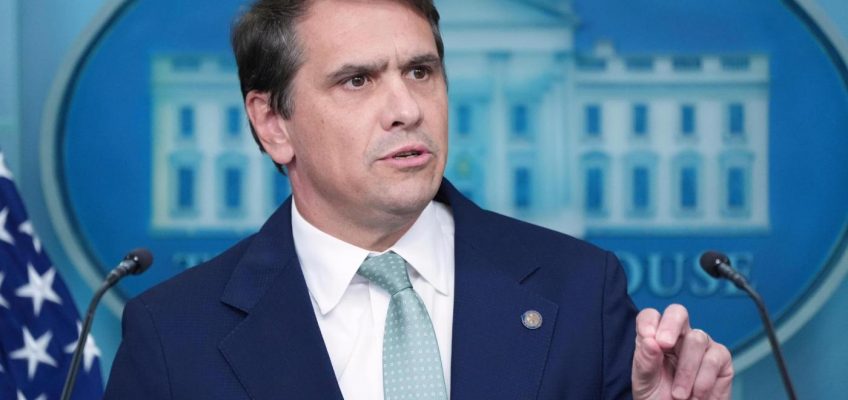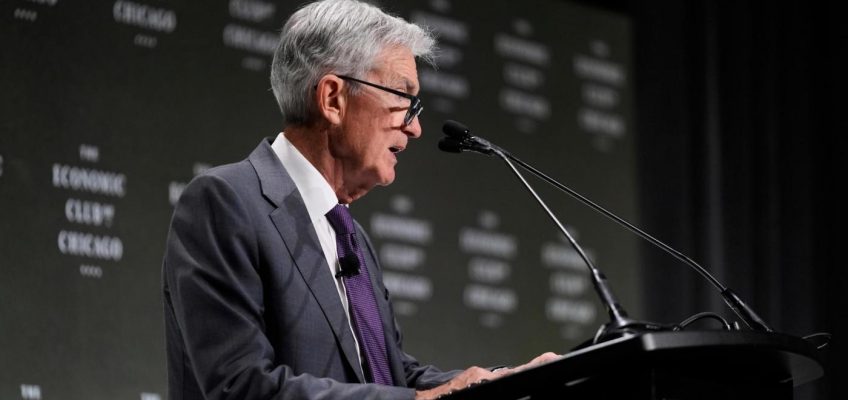By CHRISTOPHER RUGABER
WASHINGTON (AP) — President Donald Trump has opened up a new front in his attack on the Federal Reserve and its chair, Jerome Powell: He says the alledged mismanagement of a building renovation project could be grounds for firing Powell.
Justice Department asks court to unseal Jeffrey Epstein grand jury records
Venezuela releases 10 jailed Americans in deal that frees migrants deported to El Salvador by US
Trump administration seeks release of Epstein grand jury records but not Justice Department files
Trump’s birthright citizenship order remains blocked as lawsuits march on after Supreme Court ruling
Trump offers regulatory relief for coal, iron ore and chemical industries
Such an unprecedented step could send the financial markets into a tailspin and over time push up interest rates and weaken the U.S. economy. If investors start to worry the Fed is no longer independent, fewer may buy U.S. bonds, which would push up the interest rate on those bonds and lift borrowing costs more broadly.
Trump has criticized Powell for months because the chair has kept the short-term interest rate the Fed controls at 4.3% this year, after cutting it three times last year. Powell says the Fed wants to see how the economy responds to Trump’s sweeping tariffs on imports, which Powell says could push up inflation.
Powell’s caution has infuriated Trump, who has demanded the Fed cut borrowing costs to spur the economy and reduce the interest rates the federal government pays on its debt.
Firing the Fed chair would threaten the Fed’s venerated independence, which has long been supported by most economists and Wall Street investors. Here are some questions and answers about the Fed.
What’s going on with its building project?
The Fed has been renovating its Washington, D.C. headquarters and a neighboring building. With some of the construction occurring underground and as building materials have soared in price after inflation spiked in 2021 and 2022, the estimated cost has ballooned to about $2.5 billion, from $1.9 trillion.
When asked if the costly rebuilding could be grounds to fire Powell, Trump said recently, “I think it is.”
“When you spend $2.5 billion on, really, a renovation, I think it’s really disgraceful,” Trump said.
Yet in 2020, The Associated Press has reported, several Trump appointees to a local review commission pushed the Fed to include more marble in the renovation. Yet now White House officials and other critics of the project are pointing to the marble as a sign of extravagance.
Why does the Fed’s independence matter?
The Fed wields extensive power over the U.S. economy. By cutting the short-term interest rate it controls — which it typically does when the economy falters — the Fed can make borrowing cheaper and encourage more spending, accelerating growth and hiring. When it raises the rate — which it does to cool the economy and combat inflation — it can weaken the economy and cause job losses.
Economists have long preferred independent central banks because they can more easily take unpopular steps to fight inflation, such as raise interest rates, which makes borrowing to buy a home, car, or appliance more expensive.
The importance of an independent Fed was cemented for most economists after the extended inflation spike of the 1970s and early 1980s. Former Fed Chair Arthur Burns has been widely blamed for allowing the painful inflation of that era to accelerate by succumbing to pressure from President Richard Nixon to keep rates low heading into the 1972 election. Nixon feared higher rates would cost him the election, which he won in a landslide.
Paul Volcker was eventually appointed chair of the Fed in 1979 by President Jimmy Carter, and he pushed the Fed’s short-term rate to the stunningly high level of nearly 20%. (It is currently 4.3%). The eye-popping rates triggered a sharp recession, pushed unemployment to nearly 11%, and spurred widespread protests.
Yet Volcker didn’t flinch. By the mid-1980s, inflation had fallen back into the low single digits. Volcker’s willingness to inflict pain on the economy to throttle inflation is seen by most economists as a key example of the value of an independent Fed.
What do Wall Street investors think?
An effort to fire Powell would almost certainly cause stock prices to fall and bond yields to spike higher, pushing up interest rates on government debt and raising borrowing costs for mortgages, auto loans, and credit card debt. The interest rate on the 10-year Treasury is a benchmark for mortgage rates.
Most investors prefer an independent Fed, partly because it typically manages inflation better without being influenced by politics but also because its decisions are more predictable. Fed officials often publicly discuss how they would alter interest rate policies if economic conditions changed.
If the Fed was more swayed by politics, it would be harder for financial markets to anticipate — or understand — its decisions.
So does that mean the Fed is completely unaccountable?
Well, no. Fed chairs like Powell are appointed by the president to serve four-year terms, and have to be confirmed by the Senate. The president also appoints the six other members of the Fed’s governing board, who can serve staggered terms of up to 14 years.
Those appointments can allow a president over time to significantly alter the Fed’s policies. Former president Joe Biden appointed five of the current seven members: Powell, Lisa Cook, Philip Jefferson, Adriana Kugler, and Michael Barr. As a result, Trump will have fewer opportunities to make appointments. He will be able to replace Kugler, whose term ends Jan. 31, 2026.
Congress, meanwhile, can set the Fed’s goals through legislation. In 1977, for example, Congress gave the Fed a “dual mandate” to keep prices stable and seek maximum employment. The Fed defines stable prices as inflation at 2%.
The 1977 law also requires the Fed chair to testify before the House and Senate twice every year about the economy and interest rate policy.
But can the president fire Powell?
The Supreme Court earlier this year suggested in a ruling on other independent agencies that a president can’t fire the chair of the Fed just because he doesn’t like the chair’s policy choices. But he may be able to remove him “for cause,” typically interpreted to mean some kind of wrongdoing or negligence.
It’s a likely reason the Trump administration has zeroed in on the building renovation, in hopes it could provide a “for cause” pretext. Still, Powell would likely fight any attempt to remove him, and the case could wind up at the Supreme Court.




